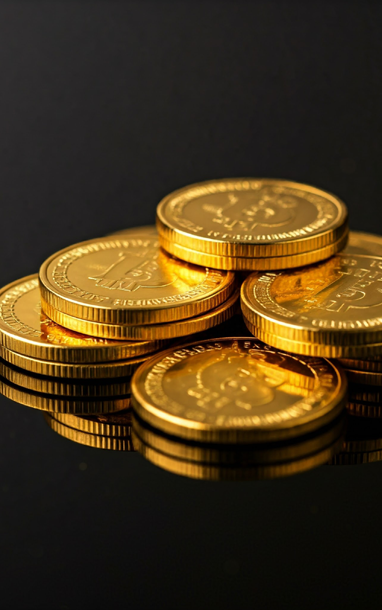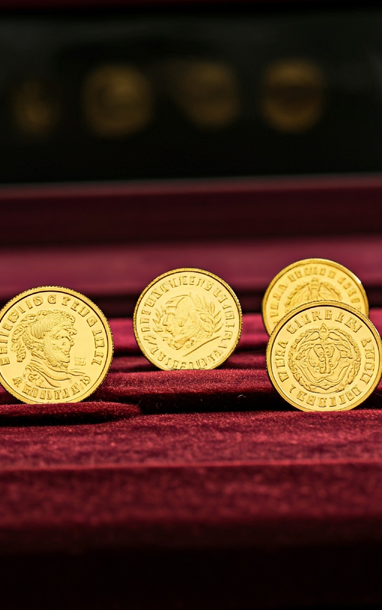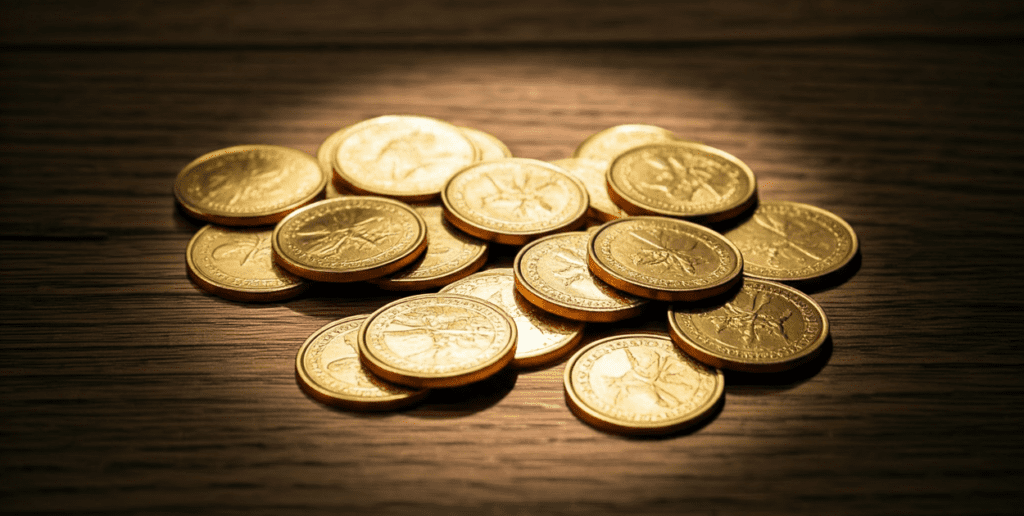Gold coins have been a symbol of wealth and status for thousands of years. Today, they are not just historical artifacts but also a popular form of investment. Whether you’re a seasoned investor or someone new to the world of precious metals, gold coins offer a stable and tangible way to diversify your portfolio. In this blog, we’ll explore the fascinating history of gold coins, their value, and why they remain a strong choice for investors.
A Brief History of Gold Coins
Gold coins have a rich history dating back to ancient civilizations. The first known gold coins were minted by the Lydians, a civilization in modern-day Turkey, around 600 BCE. These early coins were made from a naturally occurring alloy of gold and silver known as electrum. Over the centuries, gold coins became the currency of choice for many empires, including the Greeks, Romans, and Persians, and were used in trade across continents.
During the Middle Ages and into modern times, gold coins were used as currency in many countries. The Gold Standard, adopted by many nations in the 19th and early 20th centuries, linked the value of paper money to gold reserves, further cementing gold’s status as a global economic cornerstone.
Today, while gold coins are no longer used as everyday currency, they are prized by collectors and investors for their historical significance and intrinsic value.
Types of Gold Coins
Gold coins come in various forms, each with its unique characteristics, and are produced by governments and private mints alike. Here are a few popular types of gold coins:
1. Bullion Coins
Bullion coins are minted primarily for investment purposes. They are valued based on their gold content, typically measured in troy ounces, rather than their rarity or historical significance. Some of the most well-known gold bullion coins include:
- American Gold Eagle: Produced by the United States Mint, this coin is highly sought after by investors. It’s available in different denominations, from 1/10 ounce to 1 ounce, and contains 91.67% pure gold.
- Canadian Gold Maple Leaf: One of the purest bullion coins available, the Canadian Maple Leaf is made from 99.99% pure gold and is produced by the Royal Canadian Mint.
- South African Krugerrand: Introduced in 1967, the Krugerrand was the world’s first modern gold bullion coin. It contains one ounce of pure gold and is a popular choice among investors.
- Austrian Gold Philharmonic: Minted by the Austrian Mint, this coin is 99.99% pure gold and features designs inspired by the Vienna Philharmonic Orchestra.

2. Numismatic Coins
Numismatic gold coins are valued not only for their gold content but also for their rarity, age, condition, and historical significance. These coins are typically more expensive than bullion coins due to their collectible value. Examples of numismatic coins include:
- Saint-Gaudens Double Eagle: A U.S. coin minted between 1907 and 1933, named after its designer Augustus Saint-Gaudens. These coins are highly prized by collectors for their beauty and historical importance.
- British Sovereign: Minted since 1817, the British Sovereign is a well-known gold coin with a rich history, and collectors seek rare dates and mintings.
- Pre-1933 U.S. Gold Coins: Gold coins minted by the U.S. government before 1933, when the country stopped producing gold coins for circulation. These coins are valued by both collectors and investors for their historical context.
3. Commemorative Coins
Commemorative gold coins are produced by mints to mark significant events or anniversaries. While they are legal tender, their value typically exceeds their face value due to their gold content and commemorative nature.
Why Invest in Gold Coins?
Gold coins are an attractive option for both novice and experienced investors. Here are some key reasons why you should consider investing in gold coins:
1. Hedge Against Inflation
Gold has long been considered a safe-haven asset, especially during times of economic uncertainty. Unlike paper currency, which can lose value due to inflation, gold tends to hold its value or even increase when inflation rises. Owning gold coins can help preserve your wealth during periods of market volatility.
2. Tangible Asset
Unlike stocks or bonds, which are intangible, gold coins are physical assets you can hold in your hand. This makes them appealing to investors who want a secure, tangible way to store their wealth. Gold coins can also be stored relatively easily, either at home or in a bank’s safety deposit box.

3. Global Demand
Gold has universal value, making it an attractive investment no matter where you are in the world. Gold coins are recognized and traded globally, giving investors liquidity and flexibility. Whether you’re in the U.S., Europe, or Asia, gold coins are seen as valuable commodities.
4. Historical Significance
For collectors, gold coins represent pieces of history. Numismatic coins, in particular, offer not only investment potential but also the thrill of owning a piece of history that has passed through many hands over the centuries.
What Affects the Value of Gold Coins?
Several factors influence the value of gold coins, including:
- Gold Content: The purity and weight of the gold in the coin are the primary determinants of its value. Coins made from higher-purity gold, like the 99.99% pure Canadian Maple Leaf, are typically worth more.
- Condition: The condition or “grade” of a coin plays a significant role in its value, especially for numismatic coins. Coins in mint condition (unblemished and unworn) are worth more than those that show signs of wear or damage.
- Rarity: For numismatic coins, rarity can dramatically increase value. Limited mintage, rare dates, or coins from specific historical periods often fetch higher prices in the collector’s market.
- Market Demand: Like any commodity, the value of gold coins fluctuates based on market demand. During times of economic instability, the demand for gold typically rises, driving up prices.

How to Buy Gold Coins
If you’re interested in purchasing gold coins, it’s essential to do your research and buy from reputable dealers. Many gold coins, particularly bullion coins, are sold through government mints, authorized dealers, and online platforms. When buying, ensure the dealer provides a certificate of authenticity, which verifies the coin’s gold content and condition.
For those looking to invest in numismatic coins, consider consulting with a coin expert or dealer specializing in rare coins. Numismatic investments require a deeper understanding of the market and the specific factors that influence a coin’s value.
Conclusion
Gold coins offer a unique combination of historical significance and investment potential. Whether you’re looking to diversify your portfolio, hedge against inflation, or own a tangible piece of wealth, gold coins are an excellent option. From bullion coins like the American Gold Eagle to rare numismatic treasures like the Saint-Gaudens Double Eagle, there’s a gold coin to suit every investor’s needs.
If you’re ready to invest in gold coins, start by educating yourself about the different types available and work with trusted dealers to ensure you’re making a sound investment.
